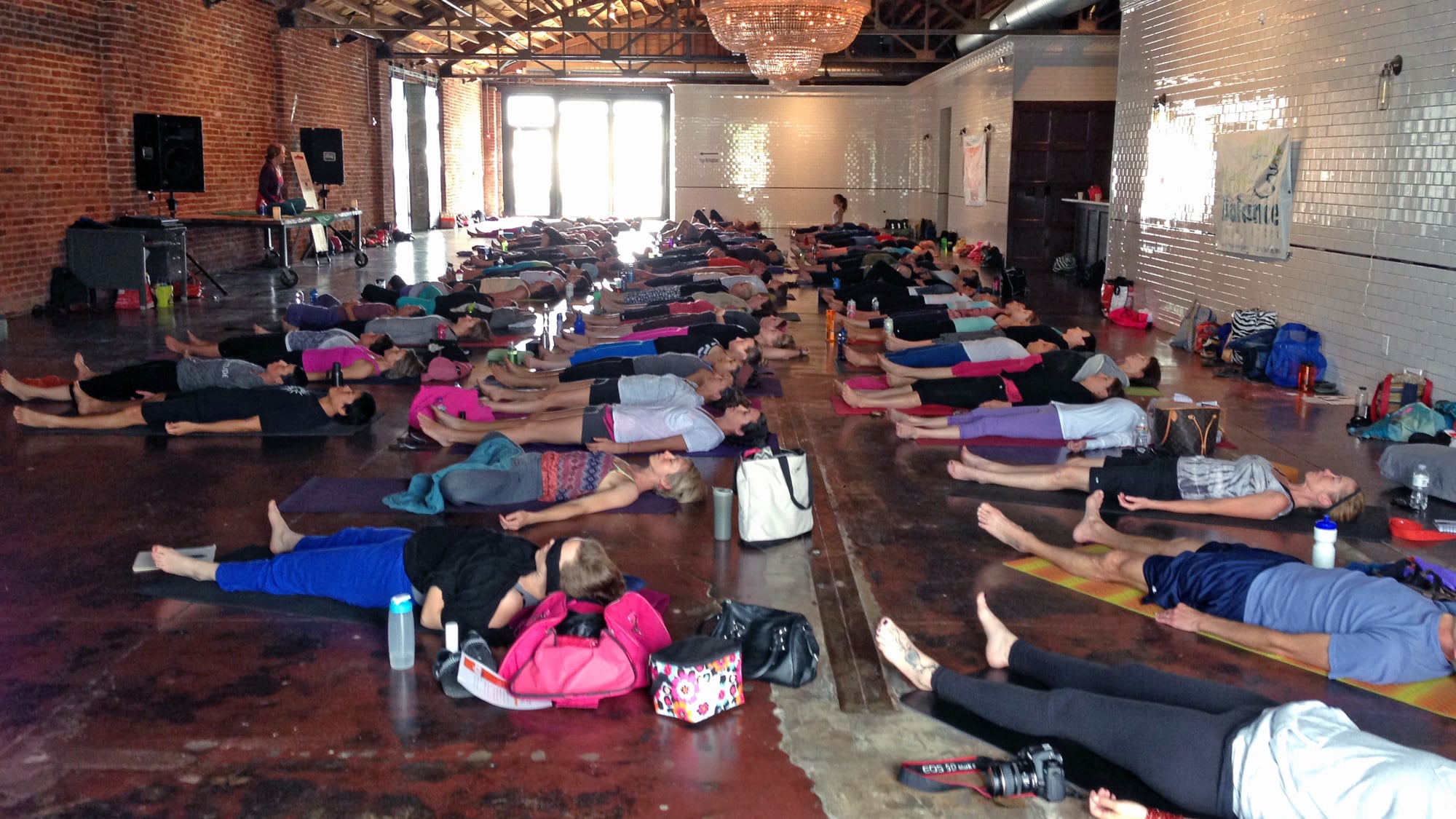When I first started practicing yoga nidra, my friends thought I had joined a cult.
It wasn't an absurd leap. Yoga nidra requires lying on your mat with your eyes closed while an instructor recites a script that's meant to induce a deep, almost trancelike relaxation. It comprises several stages, including a body scan and visualization.
A pilot class was offered at my college, and since it was the first class the instructor had taught, it was a closed course offered by invite only. We were told each stage would be introduced over several weeks, but we weren't told what those stages would be. The unspecified "final stage" was what seemed so cultlike, and while it turned out not to be anything sinister, it was slightly bizarre, involving visualizing objects from nature like trees and puppies.
Basically a highly structured guided meditation, yoga nidra is meant to bring you into a state of consciousness that's similar to how you feel when you're falling asleep. There are all kinds of unqualified claims about the benefits of practicing yoga nidra, such as a reduced need for sleep and enhanced creativity. At the beginning and end of class, you mentally repeat something called a sankalpa, which is a goal that you state as if you'd already achieved it. In his 1976 book on the subject, guru Satyananda Saraswati outlined yoga nidra as it's practiced today, with a list of sankalpas that read like something out of The Secret: "I am successful in all that I undertake" and "I achieve total health."

I practice mediation just to get out of my own head, not really for spiritual reasons, so it all sounded a little esoteric. But it's hard to deny that yoga nidra feels much deeper than sitting meditation. After class, I'd walk back to my dorm feeling like I had just woken up from the best nap of my life, with relaxed, focused energy and no grogginess.
There's a limited but growing body of research about yoga nidra's benefits for soldiers who suffer from post-traumatic stress disorder. Partly inspired by Arianna Huffington's book The Sleep Revolution, which extols the benefits of sleep for productivity, yoga nidra has become a fad in Silicon Valley.
In Portland, there are no standing yoga nidra classes, but workshops pop up around the city with enough regularity that there's usually at least a few per month. North Portland Yoga and Mandala Yoga periodically host drop-in yoga nidra classes. Unfold on Southeast Division Street hosted a yoga nidra class on New Year's Day, and the People's Yoga on North Killingsworth Street is midway through a series that will continue into February. Last month, a Lake Oswego studio hosted a yoga nidra class that featured a live harpist.
Yoga nidra has yet to experience the same widespread popularity as asana-based yoga or mindfulness-based stress reduction, perhaps out of a reluctance to commodify a practice many teachers and students view as deeply spiritual. But Portland yoga nidra instructor Kyla Ferguson says there's another reason the practice is only beginning to catch on.
"There's a lot of value on really hard, sweaty vinyasa practice because it feels like you're doing something for yourself and you're sweating and maybe you're burning calories," says Ferguson, who teaches at Mandala Yoga on Southeast Belmont Street and recorded a short yoga nidra session for YouTube. "But there's not as much of a cultural importance to accessing this kind of deep rest."
Ferguson learned about yoga nidra when she was training to become a yoga teacher. At the time, she had also been dealing with burnout from her job as a social worker. Yoga nidra didn't erase all her job stress, but it helped enough that when she decided to get her master's in social work at Smith College, she conducted a study on the practice for her thesis.
"Yoga can make the stressful things in my life more sustainable," she says. "I found that yoga nidra is a really incredible tool, so I wanted to study it in a scientific way."
For the study, 11 employees of a mental health clinic in Seattle participated in a 20-minute yoga nidra class in the middle of their workday, led by Ferguson in an office conference room. She held one class a week for six weeks, recording the perceived stress level of each participant (as determined by a standard clinical questionnaire) before and after class. Though it was a small study, the results were clear. At the end of the course, the average reported stress level had decreased by more than 50 percent, and participants reported a decrease in work-induced fatigue.
"It definitely accesses a piece of rest that I think most of us in our daily lives and in our sleep cycles don't access, even if we get a lot of sleep," Ferguson says.
Sleep doesn't exactly feel restful if you're plagued by stress dreams or wake up in the middle of the night with your thoughts racing. In yoga nidra, you're just conscious enough to let go of your thoughts. And since it's so structured and rhythmic, it's harder for thoughts to come up in the first place.
Ferguson emphasizes that yoga nidra isn't a magic cure for stress, or a replacement for actual sleep. "We inevitably live in a fast-paced, taxing kind of culture," she says, "so finding ways to continually come back and rest are really important, and it's not always that easy. Sometimes there are just a lot of demands. It ebbs and flows in terms of how I'm able to use it and whether or not I feel like I need it."
Still, Ferguson expresses a kind of unease about evaluating her practice in purely pragmatic, results-based terms.
"Dreaming is important, and sleeping is important," she says, "but the yogis would just say there's more. There are deeper places to go with our consciousness."


